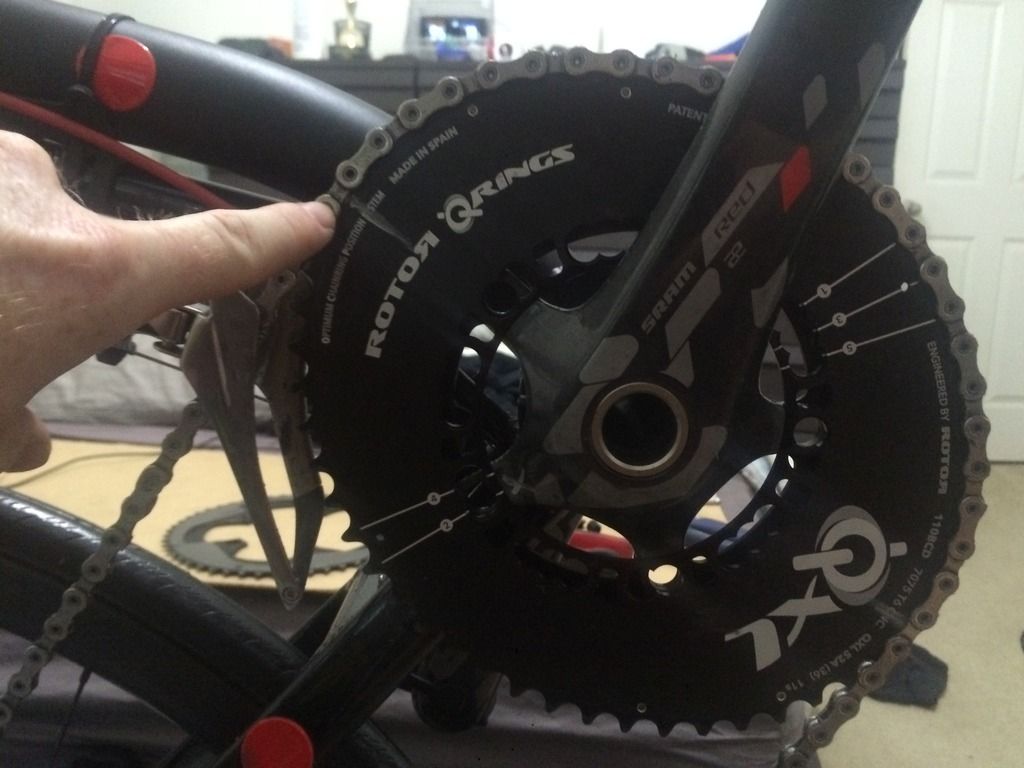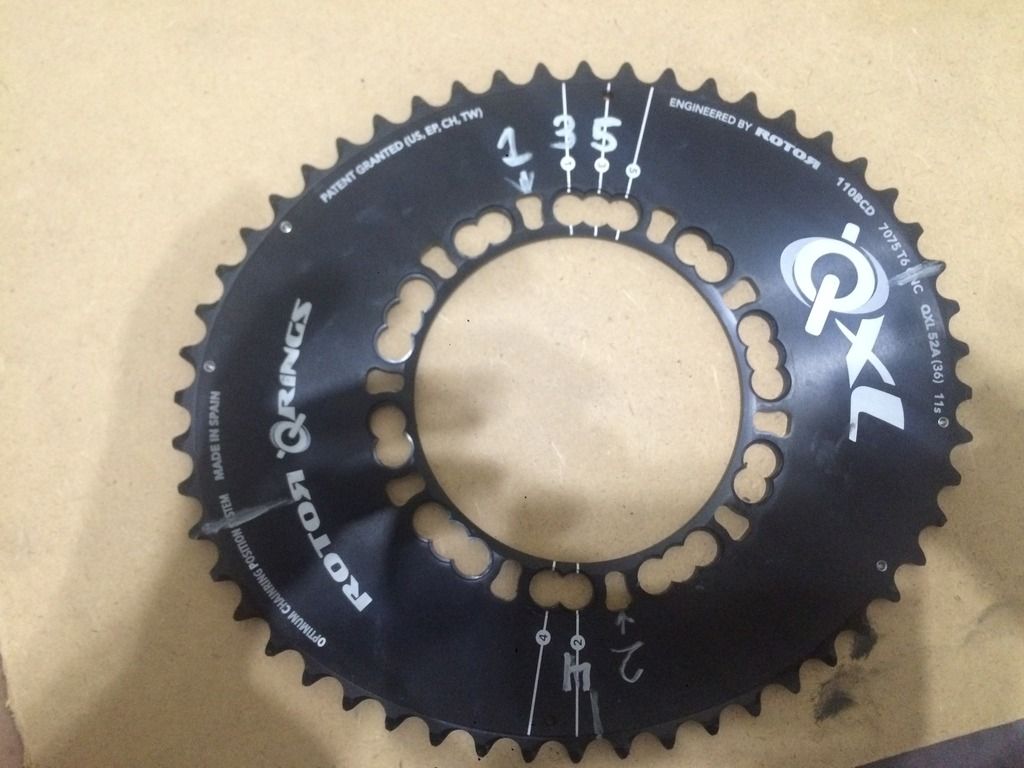We agree. Optimal leg power as the muscles never have to full disengage as they bend beyond 90degrees. This is a gravy gain if you can get it; strive for minimization of the extreme angle; and rejoice if you can get complete elimination. I come up about 2 degrees short of null for my leg geometry but it's way better than the almost 12 degree of over flex I get on 170mm. As foot speed increase this gain is minimized as momentum will carry the leg throw this point with and you give velocity and reduce the force require and thus the muscle are spared the weakness.
Yes we agree; the diameter drop; an mechanical leverage helps the weak muscles get past that phase; There should be a micro acceleration of the foot that really can't be measure, or so the math says; and a micro deceleration give some rest on top of the leverage increase. This works similar to doing higher velocity. At the weakest point the foot moves faster... on the flat this is inconsequential
Rotor makes that claim; but provides no math or tests that are repeatable. I think they are following the thought process you are.
Hills are Low Inertia Pedaling. This is where the micro acceleration comes in; when you go up step hill under heavy load any "weak" moment in the stroke will cause a "pulse" in the pedal stroke. An oval ring or a short crank allows you to compensate for that. Either use super high rpms which minimize the duration of the weak moment; Or use ovals to allow you to micro-accelerate in that dead spot and gain leverage. When you blast down a flat you don't notice this as inertia keeps you rolling if your pedal pressure is uneven. When you climb steeps inertia vanishes much faster making it suddenly a problem when pedal pressure wavers.
I will use a great example from Portland. I had the pleasure to ride the 100miles in the hills with Tom. He was on his Silvio and he's a a flat lander from Texas. Beautiful pedal rhythm; I'd follow behind him and it was like watching a metronome on the flats; truly fun to watch. Elliot for that matter too. But when the road turned up; I would watch as Tom would hit this "hitch" in his pedal stroke; right at the dead spot his rhytm would be disrupted; and you could see him loose forward momentum each time he hit that; it was like clock work and he'd have to slow way down and spin up the hill. To go faster up the hill he needs some more mechanical advantage to smooth that out. He's going to try an QXL and report back.... I have a ton of gun camera footage from that day from PluckyBlonds bike. I'm going to try and find some footage of him climbing that with his permission we can clip out to show the effect... It's really easy to see on someone else but not so easy to see on ourselves when we ride.
Yes; it would total a v02max stress test system to do that. Low Inertia; high resistance to failure with full O2 exchange measurement to really tell how it all comes together. I agree with that very expensive
Ah I was un clear. The Small Oval rings are Less Oval because of the Limits of the 110 BCD diameter. A 34T Q ring is less Oval than a 36TQ ring The 36 is has the same ratio of the big ones the 34 does not. So for 110BCD a 36T QXL with has the same 15% oval as the Big QXL and it's actually smaller than the 34Tq on it's minimum axis and bigger than the 36Tq on it's major access. So on a 110BCD the 36QXL is the better product even though the "number on it's label 36" is bigger than that on the 34Tq. Does that clear that up?
Good, fast, cheap pick 2

We do not disagree;
My only remaining point is that there are dimensioning gains. If you get a gain of "2" from ovals; and a gain of "2" from short cranks; at some point in the combinations 2+2 = 3 instead of 4. But that's still better than only get a gain of 2. And that is what I believe made Larry's test some what hard to review in a vaccum and why the discussion is so useful.
Note: also really good therapy as I wait for my sprained ankle to finish healing.
Note2: Your line of thought is very much in sync with Mark Stonich's opinions






